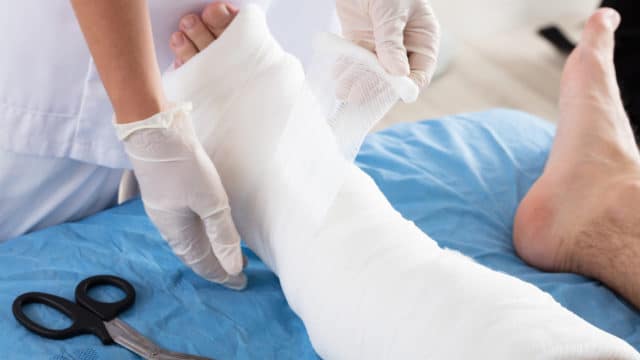Healing Wounds Caused by the Adverse Effects of Radiation Treatment
When Leslie Maynor was diagnosed with a rare cancer of the inner ear, she became fearful her life would end. After undergoing surgery, chemotherapy and radiation treatment to remove the cancer, Leslie developed severe burns and was left with a hole that was resistant to healing. Radiation conditions like Leslie’s are a common side effect of cancer treatment that can significantly impact a patient’s quality of life.
“I liked the outdoors. I liked to camp, hang out with my grandkids and kayaked at least once a week. Everything had been taken away. There was a point where I questioned, ‘what did I do all this for?’ I was afraid who I used to be would never be again,” Leslie recalls.
As survival rates for those living with cancer continue to improve, there’s a growing concern over the long-term side effects of radiation therapy treatment. Nearly 7 million patients receive radiation therapy worldwide every year. At some point during the course of treatment, it’s estimated that 50% of those diagnosed with cancer will receive radiation therapy. With the increasing number of cancer survivors, addressing the long-term effects of radiation therapy, including radiation wounds, has become a critical aspect of post-cancer care.
Radiation kills cancer cells but can also damage surrounding healthy cells that are exposed, causing conditions that reduce blood flow and result in tissue damage. Orthopedic surgeon Dr. John Trimmingham, MD, said, “The radiation causes constriction with scarring, cuts off blood supply, and then people end up with pain, ulcers and wounds that don’t heal.”
This damage can progressively worsen for months or even years after treatment ends. Late effects of radiation are specific to the part of the body that was treated and the doses of radiation received. In addition, radiation injuries may occur spontaneously or in response to a traumatic condition or infection. A soft tissue condition or wound may not be present, but the pain associated with these conditions is often why a patient seeks treatment. In Leslie’s case, she was in severe pain due to the wound that developed as an effect of radiation therapy.
Common Types of Radiation Conditions
Osteoradionecrosis (ORN) of The Jaw Bone or Mandible: Osteoradionecrosis often arises after tooth extraction in patients with prior radiation therapy. Patients with ORN can experience pain, difficulty opening the mouth, exposed and or damaged bone, drainage and swelling. Proper dental care and coordination with dental professionals are crucial for preventing and managing ORN.
Soft Tissue Radionecrosis (STRN): Soft tissue conditions are also common in the area covering bony prominences, surgical areas and those on the face. Moist skin folds such as those under the breast, the armpit and around the anus and genitals are also vulnerable. Protecting and monitoring these areas for signs of radiation damage can help prevent the development of STRN.
Radiation-Induced Cystitis: Radiation treatment in the abdomen or groin region can damage the bladder. Common symptoms include urinary urgency, pain and incontinence. Collaboration with urologists and other specialists is essential for managing radiation-induced cystitis and improving patient quality of life.
Wound Care Treatment
There is hope for healing radiation conditions. Our Wound Care Centers® heal more chronic wounds using proven treatment protocols resulting in higher comprehensive healing rates and better patient outcomes. These treatments include therapies that aid wound closure with new tissue growth, such as negative pressure wound therapy, wound debridement and hyperbaric oxygen therapy (HBO).
Depending on the type of condition, a patient may receive HBO as their primary treatment alone or as part of a comprehensive wound care plan. HBO speeds the healing of wounds and radiation conditions by increasing the amount of oxygen carried in the blood. While receiving HBO treatments, patients lay down in a large, clear tube surrounded by 100 percent oxygen at higher-than-normal atmospheric pressure.
Leslie was determined to attend her daughter’s wedding and did not give up hope. She was referred to Healogics, where her wound was successfully treated using HBO. She said, “We noticed results right away. I was not in pain 24/7. When I went to the wedding and was able to eat and dance and laugh, I accepted the fact it worked.”
If you or someone you care for has a wound that is not healing, find a Center near you today. Healogics is committed to providing the highest quality wound care treatment for patients with radiation-related conditions, helping them achieve optimal healing and improved quality of life.



